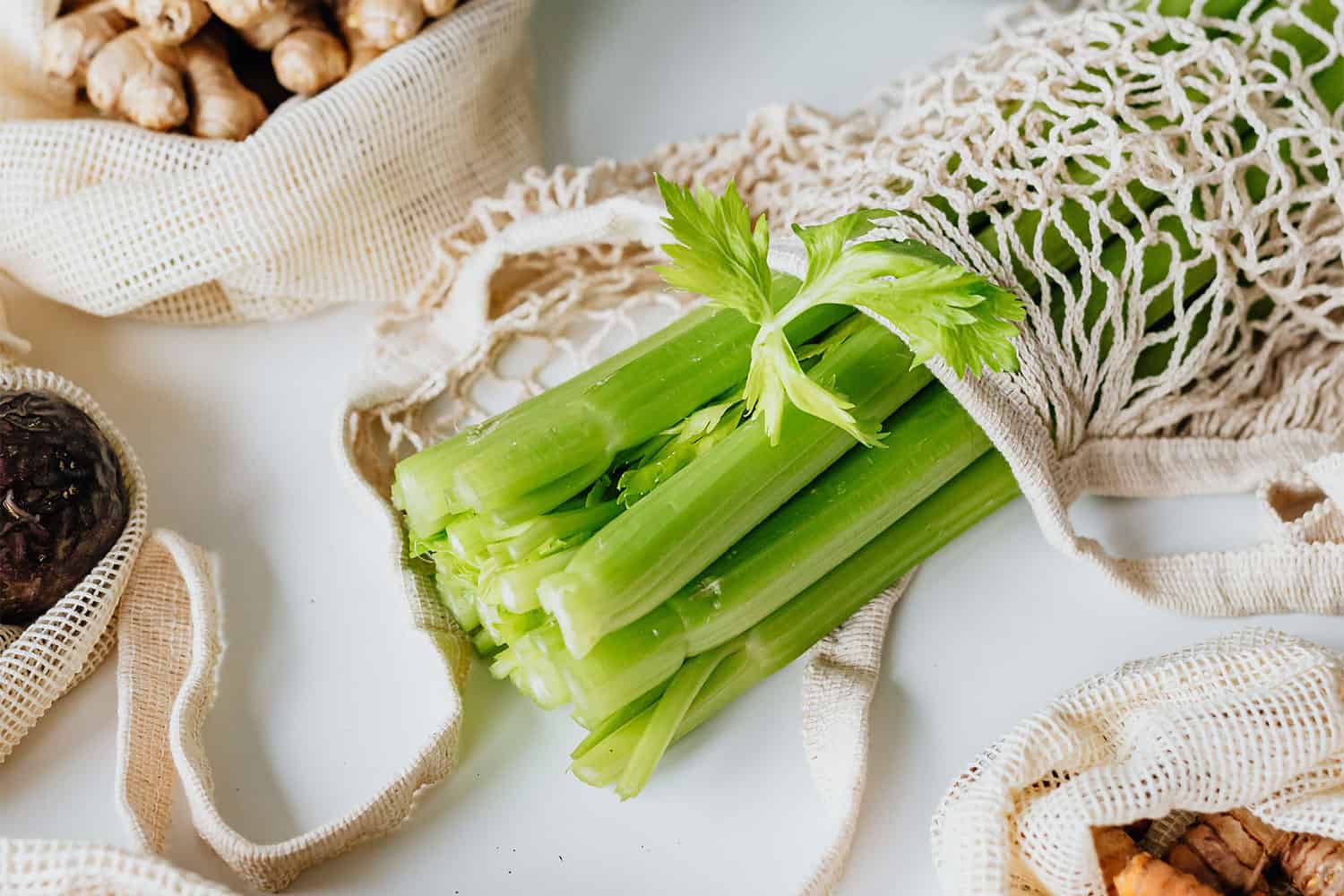

Articles
How To Store Celery To Keep It Fresh
Modified: February 23, 2024
Learn how to store celery to keep it fresh and crisp for longer with our informative articles on proper storage methods and tips.
(Many of the links in this article redirect to a specific reviewed product. Your purchase of these products through affiliate links helps to generate commission for Storables.com, at no extra cost. Learn more)
Introduction
Welcome to the ultimate guide on how to store celery to keep it fresh! Celery, with its crisp texture and refreshing taste, is a versatile and nutritious vegetable that often finds its way into various dishes, from salads and soups to stir-fries and smoothies. However, improper storage can lead to celery losing its crunchiness and becoming limp and flavorless.
Understanding the factors that affect celery’s shelf life and implementing proper storage techniques can help you extend its freshness and enjoy it for longer. In this comprehensive article, we will explore the various methods of storing celery to keep it crisp and flavorful, whether you have a refrigerator, freezer, or even a root cellar at your disposal.
Before diving into the different storage methods, it is essential to understand the factors that influence celery’s longevity. Celery is a delicate vegetable with a high water content, meaning it is prone to wilt and lose its crispness if not stored correctly. Factors such as temperature, humidity, and exposure to air can significantly impact how long celery stays fresh.
Now that we have a basic understanding of celery’s storage factors, let’s move on to preparing celery for storage. Properly preparing celery before storing it can help retain its flavor, texture, and nutritional value. Join us as we delve into the nitty-gritty details of storing celery using various methods, and discover tips and tricks to extend its shelf life.
Whether you have a surplus of celery from your garden or want to stock up on this nutritious vegetable during a sale, this guide will equip you with the knowledge to store celery successfully. Are you ready to learn how to keep your celery fresh for an extended period? Let’s get started!
Key Takeaways:
- Keep celery fresh by storing it in the refrigerator, freezer, or water. Properly prepare celery by trimming, separating, and drying it before storage to maintain its crispness and flavor.
- Extend celery’s shelf life by leaving the leaves on, avoiding excessive washing, and storing it upright. Experiment with different storage methods and enjoy fresh, crisp celery in your meals.
Read more: How To Keep Celery Fresh In Refrigerator
Understanding Celery Storage Factors
Before we dive into the different methods of storing celery, it’s important to understand the factors that affect its shelf life. By considering these factors, you can make informed decisions on how to store celery to keep it fresh for as long as possible.
Temperature: Celery is a cool-weather vegetable and thrives in temperatures between 32°F to 40°F (0°C to 4°C). Temperatures higher than this range can cause celery to wilt and become limp, while temperatures below freezing can lead to frost damage.
Humidity: Celery has a high water content, which makes it prone to drying out. Storing celery in a humid environment can help maintain its crispness. However, excessive moisture can lead to rot and spoilage. Aim for a relative humidity of around 95% to 100%.
Air Circulation: Proper airflow is crucial for keeping celery fresh. Poor ventilation can create a build-up of ethylene gas, a natural ripening agent produced by fruits and vegetables, which can cause celery to yellow and deteriorate more rapidly.
Light Exposure: Excessive exposure to light can cause celery to become bitter and lose its nutrients. Store celery in a cool, dark place to prevent quality degradation.
Knowing these factors will guide you in choosing the most suitable storage method for your celery. Let’s explore various techniques to help you keep your celery fresh, crunchy, and full of flavor!
Preparing Celery for Storage
Properly preparing celery before storage is crucial in maintaining its freshness and extending its shelf life. Follow these steps to ensure your celery stays crisp and flavorful:
- Inspect the Celery: Before storing, carefully examine each stalk of celery. Remove any damaged or discolored portions, as they can quickly spread spoilage to the rest of the vegetable.
- Separate the Stalks: Gently separate the stalks from the celery bunch. This will allow for better airflow and prevent the stalks from sticking together during storage.
- Trim the Ends: Using a sharp knife, trim about 1 inch (2.5 cm) from the bottom of each stalk. This step helps eliminate any potential rot and ensures that water can reach the stalks for hydration.
- Remove the Leaves (optional): While the leaves of celery are edible and flavorful, they tend to wilt more quickly. If you prefer, remove the leaves before storing to prolong the freshness of the stalks. You can save the leaves for use in stocks, soups, or as a garnish.
- Rinse and Dry: Give the celery stalks a thorough rinse under cool running water to remove any dirt or debris. After rinsing, pat dry with a clean towel or allow them to air dry completely. Excess moisture can lead to rotting, so ensure the stalks are dry before storing.
By following these simple steps, you’ll have properly prepared celery ready for storage. Now, let’s explore the different methods of storing celery to keep it fresh, crunchy, and delicious!
Storing Celery in the Refrigerator
The refrigerator is a common and convenient storage option for keeping celery fresh. Here’s how you can store celery in the refrigerator:
- Wrap in Aluminum Foil: After preparing the celery, tightly wrap each stalk individually in aluminum foil. This helps to retain moisture and prevent the celery from drying out. Alternatively, you can use plastic wrap or place the celery in a resealable plastic bag.
- Place in the Vegetable Crisper Drawer: The vegetable crisper drawer in your refrigerator offers a controlled environment with adjustable humidity. Place the wrapped celery in the crisper drawer, preferably unwashed, as excess moisture from washing can promote spoilage.
- Store Away from Ethylene-Producing Fruits: Keep celery away from ethylene-producing fruits like apples, bananas, and tomatoes. Ethylene can accelerate the ripening process and cause celery to become yellow and bitter.
- Check and Refresh: Regularly check the celery for any signs of spoilage. If you notice any wilting or discoloration, remove the affected stalks and use the remaining ones promptly. Refresh the aluminum foil or plastic wrap if it becomes loose or damaged.
- Recommended Shelf Life: When stored properly in the refrigerator, celery can last for up to 2 to 3 weeks. However, its freshness and crispness may start to decline after the first week. Use your senses to determine if the celery is still good to consume.
Storing celery in the refrigerator using these steps will help maintain its freshness and crunchiness. However, if you have an excess of celery or want to store it for an extended period, you may consider other storage methods, such as freezing or storing in water. Let’s explore these alternatives next!
Storing Celery in the Freezer
If you have a surplus of celery or want to preserve it for an extended period, storing celery in the freezer is a great option. Freezing celery helps retain its flavor and texture. Follow these steps to freeze celery:
- Prepare the Celery: Wash the celery stalks thoroughly and trim them into desired sizes. You can cut them into small pieces for soups and stews or leave them in long stalks for other recipes.
- Blanching (optional): Blanching celery before freezing can help maintain its color, texture, and nutritional value. Bring a pot of water to a boil and blanch the celery for 2 minutes. Then, transfer the blanched celery to an ice bath to stop the cooking process.
- Dry the Celery: After blanching (or skipping this step), make sure to pat the celery pieces dry or allow them to air dry completely. Excess moisture can lead to freezer burn.
- Freeze the Celery: Place the celery pieces in a single layer on a baking sheet or tray lined with parchment paper. This will prevent them from sticking together during freezing. Place the tray in the freezer and let the celery freeze for a few hours or until solid.
- Transfer to Storage Bags: Once the celery is frozen, transfer the pieces into freezer-safe bags or airtight containers. Remove as much air as possible from the bags before sealing to prevent freezer burn.
- Label and Date: Don’t forget to label the bags with the contents and date of freezing. This will help you keep track of your frozen celery and ensure you use the oldest ones first.
- Recommended Shelf Life: When stored in the freezer, celery can maintain its quality for up to 10 to 12 months. However, for the best flavor and texture, it is recommended to use frozen celery within 6 months.
Frozen celery works well in cooked dishes like soups, stews, stir-fries, and casseroles. While the texture may become softer after freezing, the flavor and nutritional value remain intact. Remember to thaw the frozen celery in the refrigerator before using it in your recipes.
Now that you know how to freeze celery, let’s explore another unique method of storing celery – storing it in water!
Read more: How To Store Fresh Celery
Storing Celery in Water
Storing celery in water is an unconventional but effective method to keep it fresh and crisp. By placing celery stalks in water, you can maintain their moisture content and extend their shelf life. Here’s how you can store celery in water:
- Trim the Celery: Start by trimming the ends of the celery stalks, removing about 1 inch (2.5 cm) from the bottom. This will allow the celery to absorb water more effectively.
- Choose a Container: Select a glass or jar that is tall enough to accommodate the whole length of the celery stalks. Make sure the container is clean and food-safe.
- Add Water: Fill the container with fresh, cool water. Ideally, the water level should submerge the trimmed ends of the celery but not cover the entire stalks.
- Place Celery in the Water: Carefully place the celery stalks, one by one, in the container with the trimmed ends submerged in the water. Ensure that the celery is standing upright for maximum water absorption.
- Cover and Store: Once all the celery stalks are in the container, cover it with a plastic wrap or a lid. This will help maintain the humidity and prevent any odors from contaminating the celery.
- Change the Water: Every few days, change the water in the container to keep it fresh. This prevents any bacterial growth and maintains the celery’s freshness.
- Recommended Shelf Life: When stored in water, celery can remain fresh for up to 1 to 2 weeks. However, it’s always best to use your senses (appearance, texture, and smell) to determine if the celery is still good to consume.
Storing celery in water not only helps retain its crunchiness but also adds a decorative touch to your kitchen. You can keep the container of celery on the countertop or in the refrigerator, based on your preference. Remember to check the water regularly and replenish it as needed.
Now that you are familiar with storing celery in water, let’s explore other methods like using aluminum foil, plastic bags, or even a root cellar!
To keep celery fresh, wrap it in aluminum foil before storing it in the refrigerator. This will help to maintain its crispness and prevent it from becoming limp.
Storing Celery in Aluminum Foil
If you’re looking for a simple and effective way to store celery, using aluminum foil is a great option. The foil helps retain the moisture and freshness of the celery, ensuring it stays crisp and flavorful. Here’s how to store celery in aluminum foil:
- Prepare the Celery: After washing and drying the celery stalks, trim the ends to remove any wilted or damaged parts. Cutting about 1 inch (2.5 cm) from the bottom will also help the celery absorb moisture.
- Individually Wrap the Stalks: Take each celery stalk and wrap it tightly with aluminum foil. The foil serves as a protective barrier, preventing the moisture from escaping and maintaining the celery’s freshness.
- Label and Date: It’s a good idea to label each foil-wrapped celery stalk with the date of storage. This will help you keep track of its freshness and use the oldest stalks first.
- Store in the Refrigerator: Place the wrapped celery stalks in the vegetable crisper drawer or in a plastic bag in the refrigerator. This cool and controlled environment will help keep the celery crisp and extend its shelf life.
- Check and Refresh: Regularly check the celery for any signs of spoilage. Should you spot any wilted or discolored stalks, remove them promptly to prevent the spread of spoilage to the rest of the batch. Refresh the aluminum foil if needed.
- Recommended Shelf Life: When stored in aluminum foil in the refrigerator, celery can last for up to 2 to 3 weeks. However, its crispness and flavor might decline after the first week. Use your judgment to determine if the celery is still suitable for consumption.
Storing celery in aluminum foil is a convenient method that helps preserve its freshness and texture. Whether you’re using the celery in salads, stir-fries, or as a snack, the foil will help maintain its crunchiness. Remember to properly wrap each stalk to create an airtight seal.
Now that you have learned how to store celery in aluminum foil, let’s explore another popular method: storing celery in plastic bags.
Storing Celery in a Plastic Bag
When it comes to storing celery, using plastic bags is a simple and effective method. Plastic bags help create a humid environment, preserving the celery’s moisture and keeping it fresh for longer. Here’s how to store celery in a plastic bag:
- Prepare the Celery: Wash the celery stalks thoroughly and trim off any damaged or wilted parts. Cutting about 1 inch (2.5 cm) from the bottom can aid in water absorption and maintaining freshness.
- Dry the Celery: Ensure that the celery is completely dry before placing it in the plastic bag. Moisture can cause rot and spoilage, so pat the stalks dry with a clean towel or allow them to air dry.
- Place in a Plastic Bag: Gently place the celery stalks inside a clean plastic bag. The bag should be large enough to accommodate the celery without bending or crushing the stalks.
- Seal the Bag: Seal the plastic bag tightly, expelling as much air as possible. This creates a humid environment within the bag, helping to retain the moisture and crispness of the celery.
- Store in the Refrigerator: Place the sealed plastic bag with the celery in the vegetable crisper drawer or a designated space in the refrigerator. The cool temperature will slow down the rate of spoilage and keep the celery fresh.
- Check for Freshness: Periodically check the celery for any signs of deterioration. If you notice any softness, discoloration, or foul odor, remove the affected stalks promptly and use the remaining ones as soon as possible.
- Recommended Shelf Life: When stored in a plastic bag in the refrigerator, celery can stay fresh for about 1 to 2 weeks. However, it is always best to use your senses to determine if the celery is still suitable for consumption.
Storing celery in a plastic bag is a cost-effective and efficient method that helps maintain its crispness and flavor. The bag acts as a barrier to prevent moisture loss and maintain the optimal humidity for the celery.
Now that you’ve discovered how to store celery in a plastic bag, let’s explore another unique method – storing celery in a glass jar!
Storing Celery in a Glass Jar
If you’re looking for an eco-friendly and visually appealing way to store celery, using a glass jar is a fantastic option. Storing celery in a glass jar helps retain its moisture and keeps it fresh for an extended period. Here’s how you can store celery in a glass jar:
- Prepare the Celery: Wash the celery stalks thoroughly and trim off any damaged or wilted parts. Cutting about 1 inch (2.5 cm) from the bottom will help the celery absorb water and maintain its freshness.
- Select a Glass Jar: Choose a clean and food-safe glass jar that is tall enough to accommodate the full length of the celery stalks. A mason jar or a glass storage container with a lid works well for this purpose.
- Add Water: Fill the glass jar with fresh, cool water. The water level should be enough to submerge the trimmed ends of the celery stalks without covering the entire stalks.
- Place Celery in the Jar: Insert the trimmed celery stalks into the glass jar, ensuring that the cut ends are submerged in the water. The celery stalks should stand upright in the jar.
- Secure the Lid: Place the lid on the glass jar to create a seal. This helps maintain the humidity and prevents unwanted odors from contaminating the celery.
- Store in the Refrigerator: Place the glass jar with the celery in the refrigerator, preferably in the vegetable crisper drawer. The cool temperature will slow down the celery’s deterioration and keep it fresh.
- Change the Water: Every few days, check the water in the glass jar and refresh it if needed. Fresh water helps maintain the quality and crispness of the celery.
- Recommended Shelf Life: When stored in a glass jar with water in the refrigerator, celery can stay fresh for about 1 to 2 weeks. However, use your senses to determine if the celery is still good to consume.
Storing celery in a glass jar not only helps retain its moisture and freshness but also adds an aesthetic touch to your refrigerator or countertop. The transparent jar allows you to see the beautiful green stems of the celery, adding a visually pleasing element to your kitchen.
Now that you’ve learned how to store celery in a glass jar, it’s time to explore another storage option – the root cellar!
Read more: How To Store Fresh Bread To Keep It Fresh
Storing Celery in a Root Cellar
If you have access to a root cellar or a cool, dark storage space, storing celery in such conditions can help retain its freshness for extended periods. A root cellar provides the optimal environment to keep celery cool and prevent moisture loss. Here’s how you can store celery in a root cellar:
- Prepare the Celery: Wash the celery stalks thoroughly and trim off any damaged or wilted parts. Cutting about 1 inch (2.5 cm) from the bottom will aid in water absorption and maintaining freshness.
- Wrap in Damp Cloth: Wrap the celery stalks loosely in a damp cloth or paper towel. This helps retain moisture and prevents the celery from drying out.
- Place in a Storage Container: Place the wrapped celery stalks in a storage container or a perforated plastic bag. The container should have ventilation to allow for proper air circulation.
- Store in the Root Cellar: Find a cool, dark, and well-ventilated spot in your root cellar to store the celery. The temperature should ideally be around 32°F to 40°F (0°C to 4°C). Avoid storing celery near other ethylene-producing fruits and vegetables.
- Regularly Check for Freshness: Periodically check the celery for any signs of spoilage. Remove any wilted or rotting stalks promptly to prevent the spread of spoilage to the rest of the celery.
- Recommended Shelf Life: When stored in a root cellar, celery can retain its freshness for up to 4 to 6 weeks. However, it’s best to use your senses to determine if the celery is still suitable for consumption.
A root cellar provides a natural and energy-efficient way to store celery and other produce. Its cool and consistent temperature helps prolong the celery’s shelf life, allowing you to enjoy it for an extended period without compromising its quality.
Now that you’ve explored various storage methods, along with tips to extend the shelf life of celery, you’ll be able to keep this versatile vegetable fresh and flavorful for a longer time.
Tips for Extending the Shelf Life of Celery
While knowing the various storage methods is essential, implementing these additional tips can further extend the shelf life of celery and ensure its long-lasting freshness:
- Leave the Leaves On: If possible, keep the leaves attached to the celery stalks until ready to use. The leaves help retain moisture and freshness.
- Avoid Washing Before Storage: Try to avoid washing celery before storing it. Excess moisture can promote rot and spoilage. Instead, rinse the celery just before using it.
- Keep Celery Whole: If you don’t plan on using the entire celery stalk at once, keep it intact until you’re ready to use it. Cutting celery exposes more surface area, leading to faster moisture loss.
- Store Upright: When storing celery, keep it standing upright, with the cut ends submerged in water or wrapped in a damp cloth. This helps the celery retain moisture and freshness.
- Keep Away from Ethylene-Producing Fruits: Ethylene-producing fruits like apples, bananas, and tomatoes can accelerate the ripening process and cause celery to turn yellow or become bitter. Store celery away from these fruits.
- Monitor and Remove Spoiled Stalks: Regularly inspect the celery for any signs of spoilage such as mushy texture, mold, or off-putting odor. Remove any spoiled stalks immediately to prevent contamination of the remaining celery.
- Use Fresh Celery Leaves: If you remove the leaves from celery before storage, don’t discard them! Celery leaves can be used to flavor stocks, soups, and salads, adding an additional layer of flavor and reducing food waste.
- Consider Celery Preservation: If you have an excess of celery, consider preserving it by freezing, canning, or pickling. These methods allow you to enjoy celery even when it’s out of season.
By following these tips, you can significantly extend the shelf life of celery, ensuring that it remains fresh, crisp, and flavorful for a longer duration. Remember to tailor these measures to the storage method you choose.
Now that you’re equipped with knowledge of proper celery storage and preservation, you can enjoy this versatile vegetable in a wide range of meals and dishes without worrying about spoilage or loss of quality.
Keep these tips in mind, experiment with different storage methods, and enjoy the benefits of having fresh celery readily available whenever you need it!
Encoded HTML:
<h2>Tips for Extending the Shelf Life of Celery</h2>
<p>While knowing the various storage methods is essential, implementing these additional tips can further extend the shelf life of celery and ensure its long-lasting freshness:</p>
- <p>Leave the Leaves On: If possible, keep the leaves attached to the celery stalks until ready to use. The leaves help retain moisture and freshness.</p>
- <p>Avoid Washing Before Storage: Try to avoid washing celery before storing it. Excess moisture can promote rot and spoilage. Instead, rinse the celery just before using it.</p>
- <p>Keep Celery Whole: If you don’t plan on using the entire celery stalk at once, keep it intact until you’re ready to use it. Cutting celery exposes more surface area, leading to faster moisture loss.</p>
- <p>Store Upright: When storing celery, keep it standing upright, with the cut ends submerged in water or wrapped in a damp cloth. This helps the celery retain moisture and freshness.</p>
- <p>Keep Away from Ethylene-Producing Fruits: Ethylene-producing fruits like apples, bananas, and tomatoes can accelerate the ripening process and cause celery to turn yellow or become bitter. Store celery away from these fruits.</p>
- <p>Monitor and Remove Spoiled Stalks: Regularly inspect the celery for any signs of spoilage such as mushy texture, mold, or off-putting odor. Remove any spoiled stalks immediately to prevent contamination of the remaining celery.</p>
- <p>Use Fresh Celery Leaves: If you remove the leaves from celery before storage, don’t discard them! Celery leaves can be used to flavor stocks, soups, and salads, adding an additional layer of flavor and reducing food waste.</p>
- <p>Consider Celery Preservation: If you have an excess of celery, consider preserving it by freezing, canning, or pickling. These methods allow you to enjoy celery even when it’s out of season.</p>
<p>By following these tips, you can significantly extend the shelf life of celery, ensuring that it remains fresh, crisp, and flavorful for a longer duration. Remember to tailor these measures to the storage method you choose.</p>
<p>Now that you’re equipped with knowledge of proper celery storage and preservation, you can enjoy this versatile vegetable in a wide range of meals and dishes without worrying about spoilage or loss of quality.</p>
<p>Keep these tips in mind, experiment with different storage methods, and enjoy the benefits of having fresh celery readily available whenever you need it!</p>
Conclusion
Congratulations! You have now become a celery storage expert, equipped with a range of methods and tips to keep your celery fresh and delicious for longer periods. By understanding the factors that affect celery’s shelf life and implementing appropriate storage techniques, you can ensure that your celery stays crisp, flavorful, and packed with nutrients.
We explored various storage methods, including storing celery in the refrigerator, freezer, water, aluminum foil, plastic bags, and even in a root cellar. Each method offers unique advantages and allows you to choose the one that best suits your needs and available resources.
Remember to prepare the celery properly before storage by trimming the ends, removing damaged parts, and ensuring that it is thoroughly dry. This will help maintain its quality and extend its shelf life.
Throughout the article, we provided insightful tips such as leaving the leaves on, avoiding excessive washing, storing celery upright, and being mindful of ethylene-producing fruits. These tips, along with regular monitoring and removal of spoiled stalks, can make a significant difference in preserving the freshness of your celery.
Whether you prefer the convenience of the refrigerator or the rustic charm of a root cellar, the choice is yours. Each storage method allows you to enjoy celery in dishes ranging from salads and soups to stir-fries and smoothies, no matter the season.
Now it’s time for you to put your knowledge into practice. Experiment with different methods, adapt them to your preferences and storage conditions, and discover what works best for you. With these storage techniques and tips, you can say goodbye to wilted and limp celery and greet fresh and crisp stalks every time you reach for them.
Enjoy the convenience and versatility of having freshly stored celery at your fingertips, and make the most of this nutritious and delicious vegetable in your culinary adventures. Happy celery storage and bon appétit!
Frequently Asked Questions about How To Store Celery To Keep It Fresh
Was this page helpful?
At Storables.com, we guarantee accurate and reliable information. Our content, validated by Expert Board Contributors, is crafted following stringent Editorial Policies. We're committed to providing you with well-researched, expert-backed insights for all your informational needs.

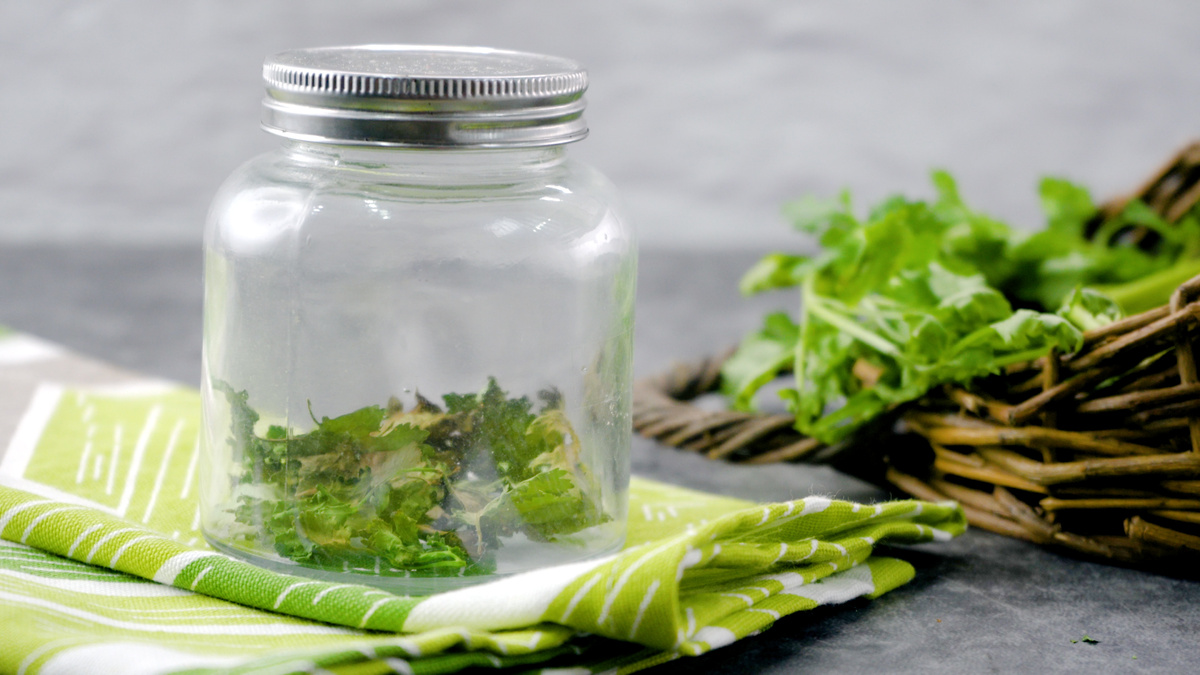
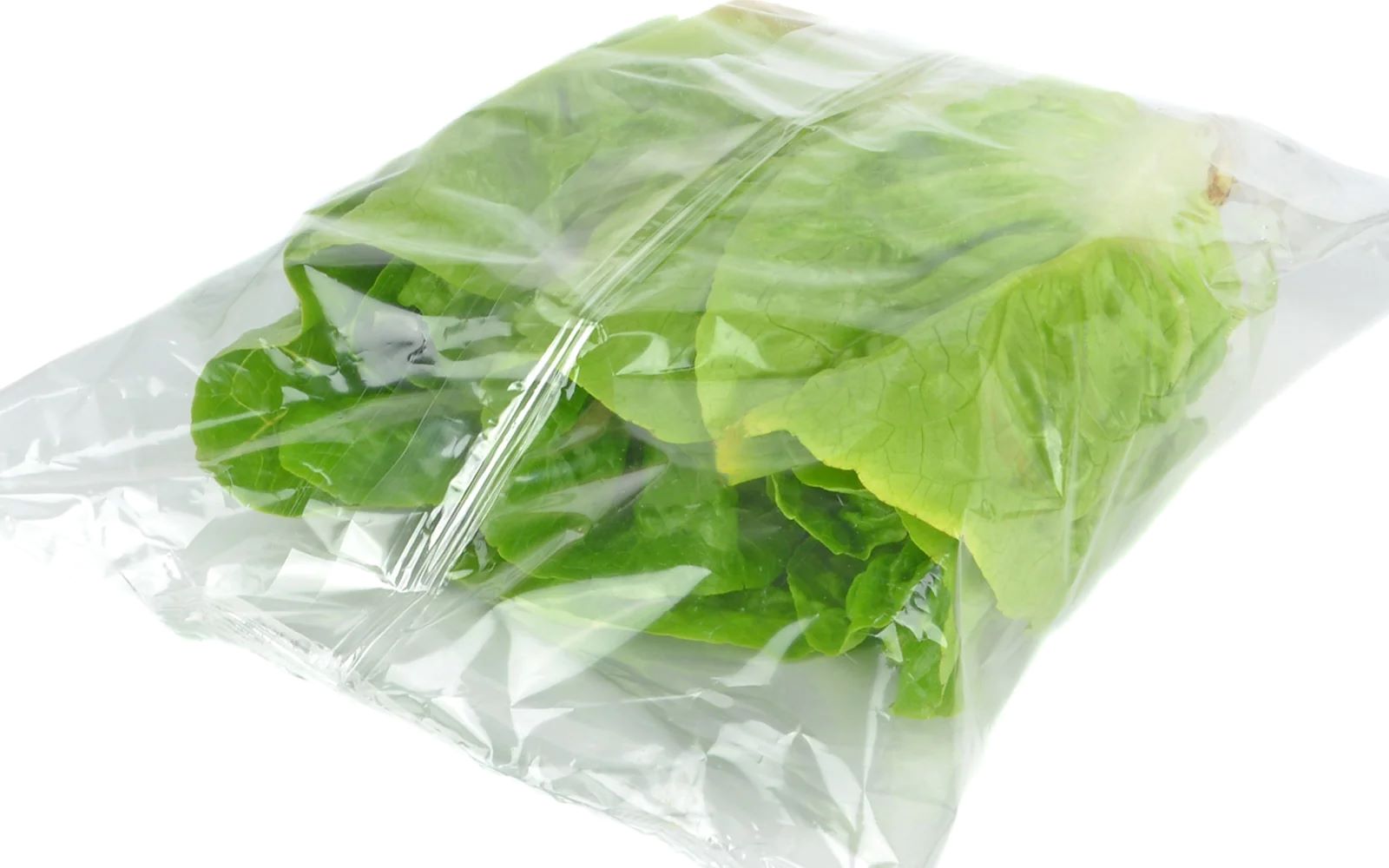

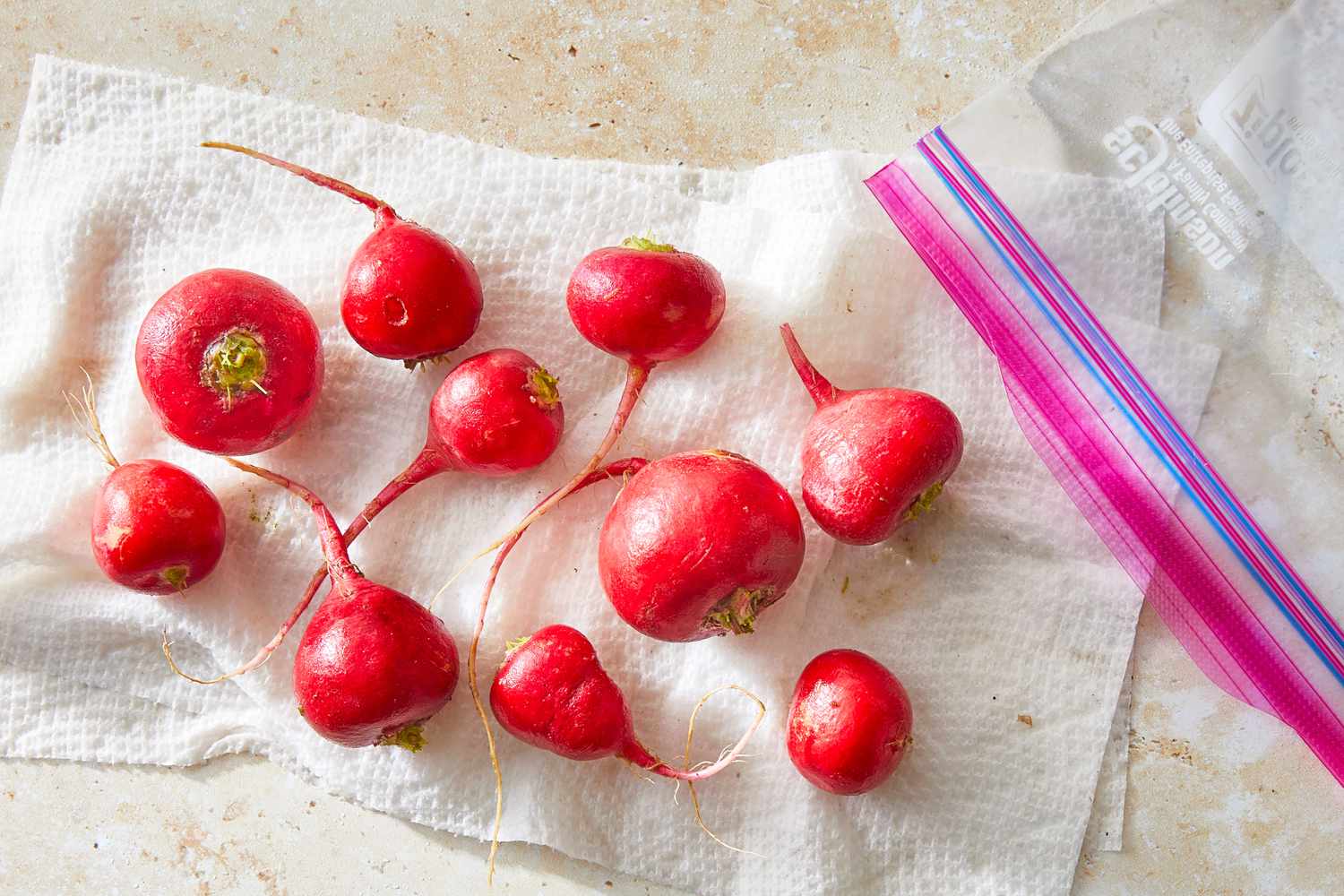

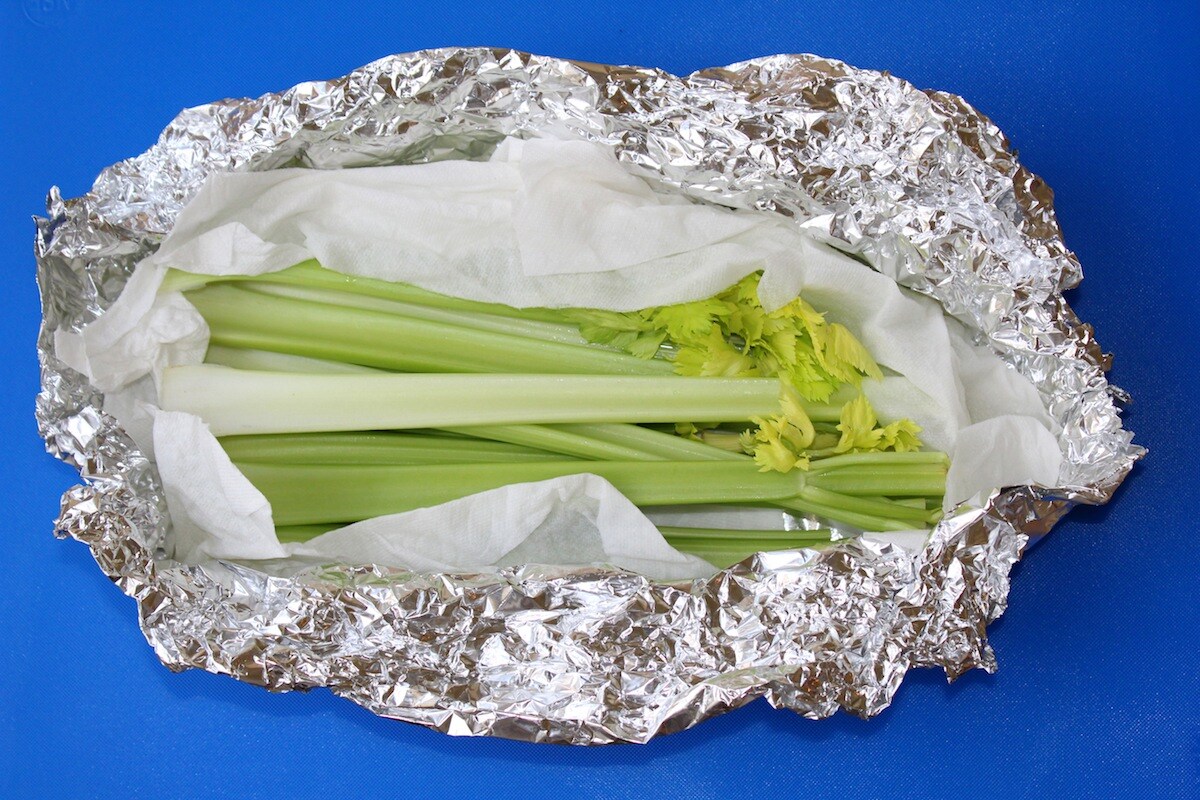


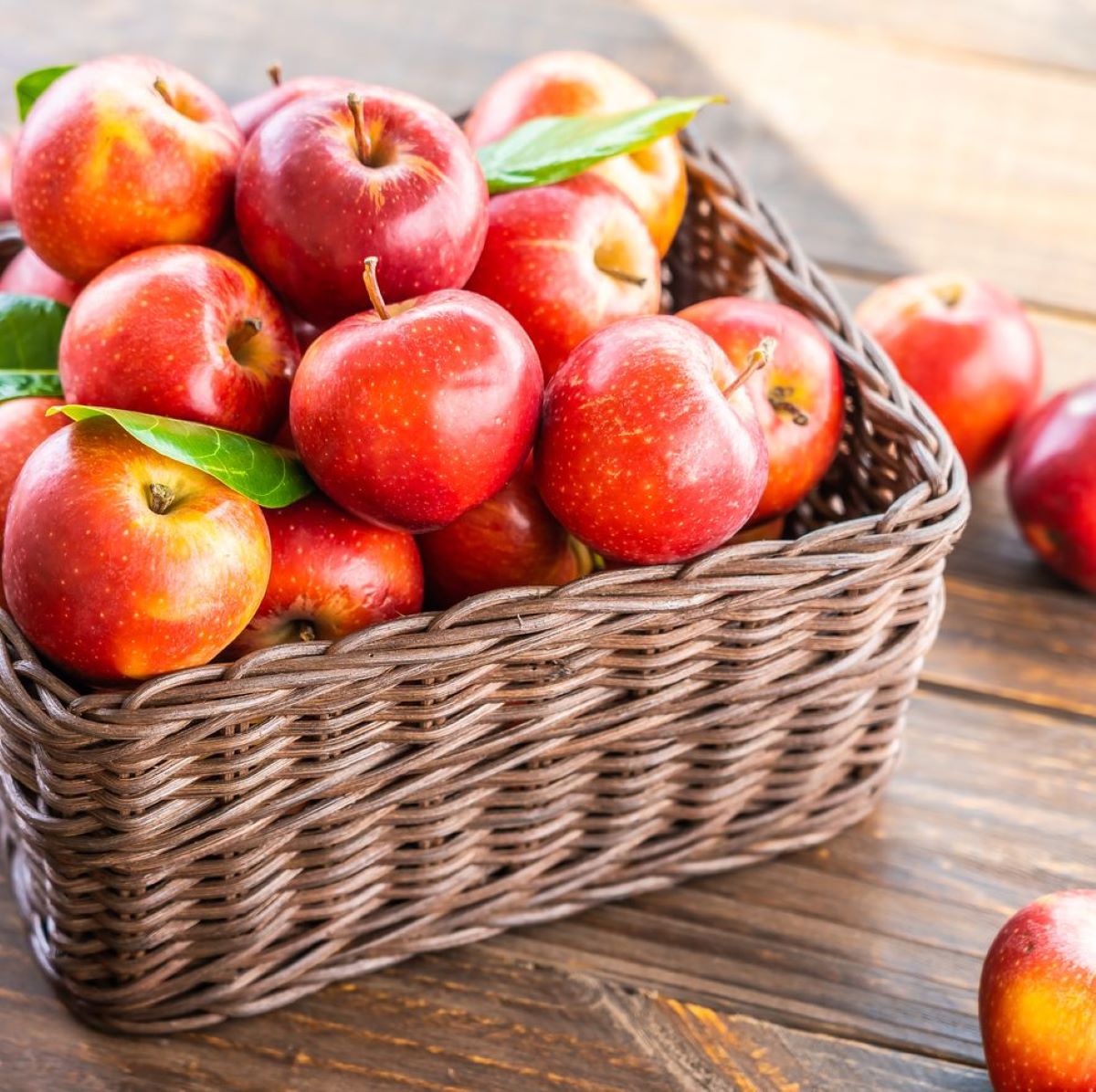
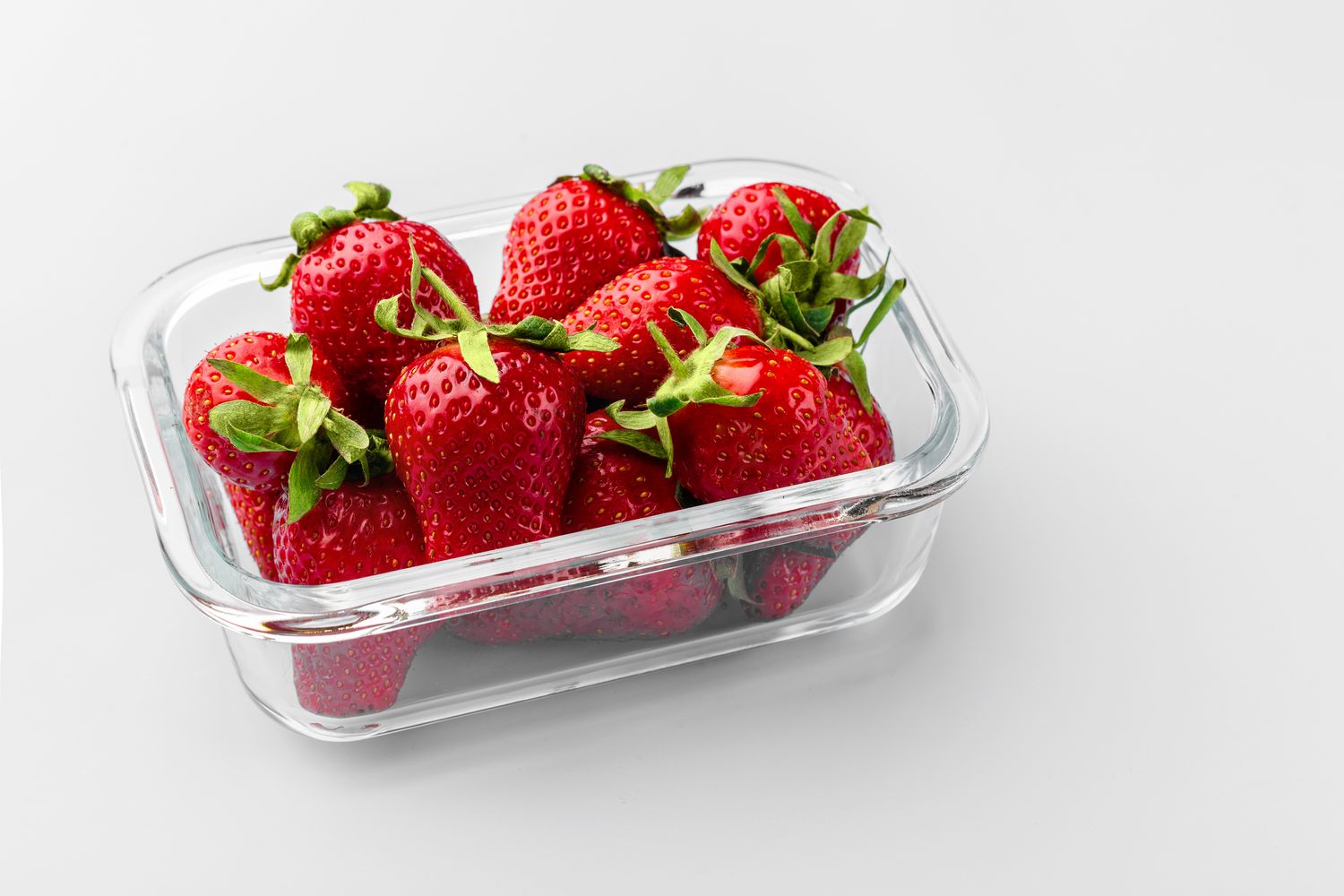

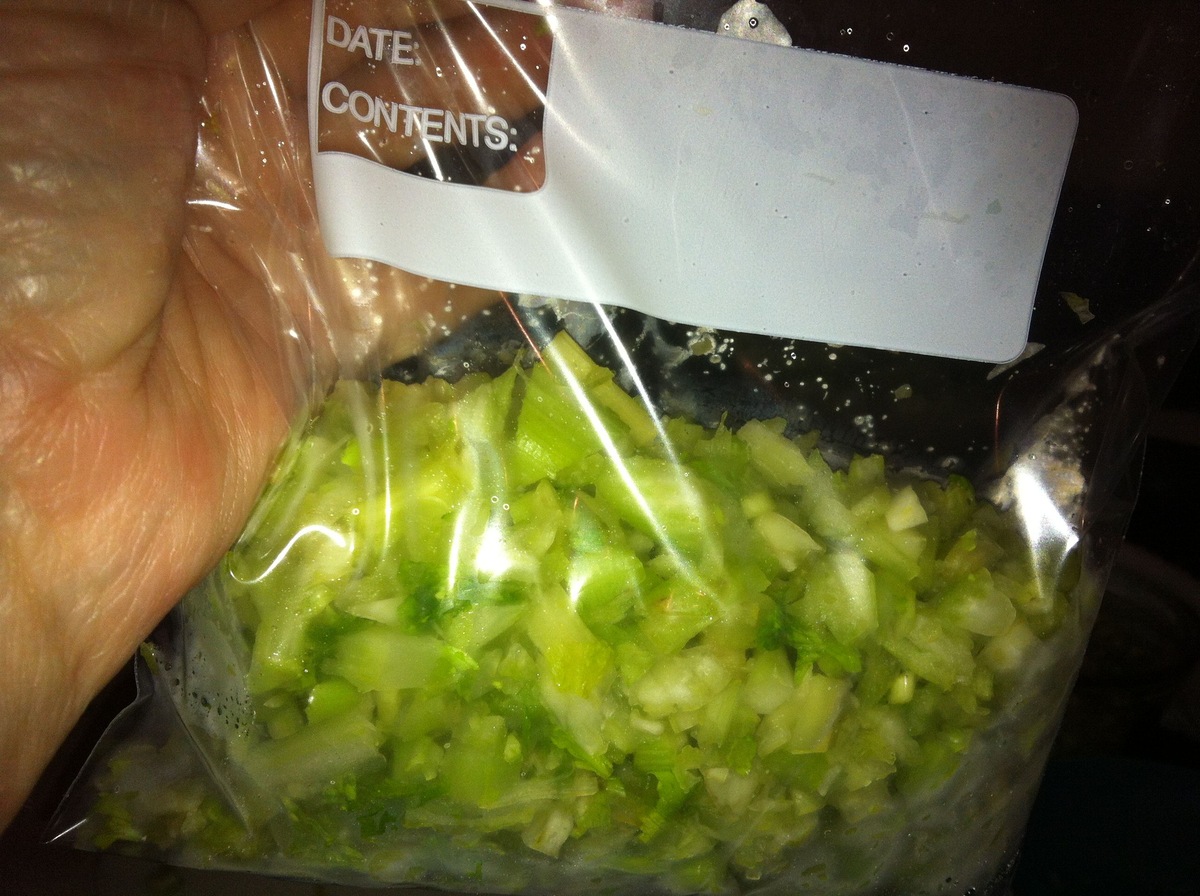

0 thoughts on “How To Store Celery To Keep It Fresh”